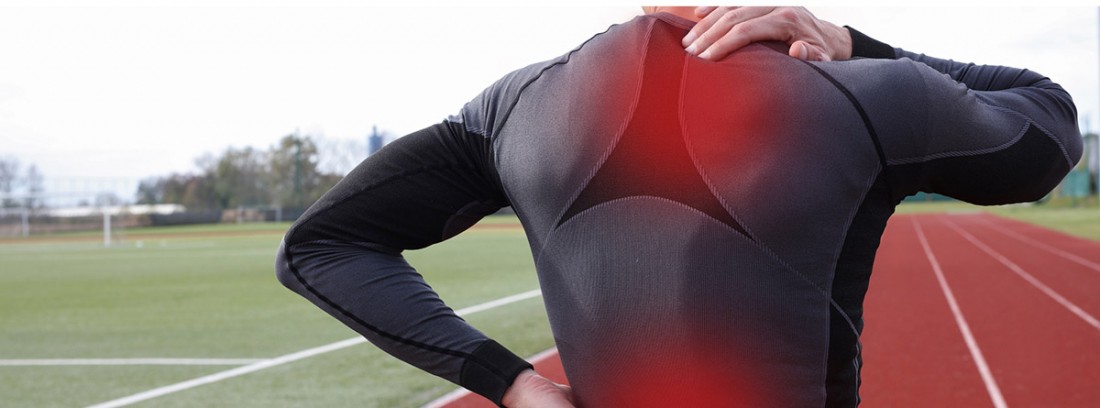How to prevent back pain in runners?

It is common to notice a loaded back after sports practice and we blame it on mechanical overload or on, but if these symptoms last over time we must rule out other possible causes.
Members have a free team of experts in sports medicine. A personal trainer will be able to advise you personally via chat and you will avoid risks, injuries or ailments that can be easily prevented with precise attention.
How to recognize the symptoms?
It is a premise to know our musculoskeletal limit. We know when our muscles begin to run out and we must know when to stop. It's just a matter of self control. If we do not know our limit we run the risk of injuring ourselves.
Likewise, we must have knowledge that helps us better understand our symptom as soon as they begin to manifest. The mindset is not difficult, but it must be followed. A lumbar pain It can be due to very different causes, among which we must mention some totally unrelated to a sports problem, such as:
Depending on the characteristics of the pain and the procession of accompanying symptoms, we can suspect its possible origin. Of course, if we have chills or we are out of temper we should not force the machine. As a premise, a lumbar pain located at the waist level and that is modified with movement we will attribute it to a pain of musculoskeletal origin, which could be a lumbar sprain, a lumbago, a psoas syndrome, a, etc.
What should we do?
In all cases, sports activity will worsen our symptoms, so the best option would be to interrupt it and carry out symptomatic treatment. We will go to a face-to-face medical visit if the symptoms do not improve after starting a sports break and analgesic treatment. It may be a self-limited mechanical overload, but it may be a more serious trauma problem. Therefore, our recommendation is:
- Go to a medical visit if the condition, far from being resolved in two or three days, persists or, worse, worsens.
- Make a physical exploration and a good interrogation will allow the doctor to orient the symptoms and issue a diagnostic orientation.
- It is most likely necessary to performing a diagnostic test that allows us to filter the case in more depth. Initially, one is carried out in which we can assess the vertebral discs, the intervertebral spaces, the alignment of the axis, possible dysmetria, arthritic signs, calcifications, malformations….
When the X-ray detects a lesion that requires further study, one or one is usually used, depending on the object of study (an MRI is usually requested for the study of the soft tissues and a tomography for the bone study). May require other tests to confirm the diagnosis (musculoskeletal ultrasound, electromyography ...).
Know and work the core
After this global exposition of the significance that low back pain can have, it is important that the athlete, especially the runner, have some unavoidable knowledge. The first concept that must be internalized is that of core musculature.
It is about the muscle groups that support the spine (muscles of the pelvis, lower lower back, hip and abdomen). There must be a harmonious balance between these different muscle groups to distribute the force transmitted in the axis during the race. Any bad posture that alters the balance and muscular stability will lead to overload of the rest of the muscular components.
The core muscles comprise three anatomical subgroups:
- ABS: are the muscles located in the abdominal wall. They support the digestive organs contained in the abdominal cavity, participate in respiration and provide balance anterior to the axis of the spine. They are enhanced by doing sit-ups.
- Hip muscles they stabilize the pelvic posture and provide stability and support during gait. They are enhanced with rotational movements
- The muscles of the lower back (gluteal, pyramidal and paravertebral) provide posterior stability to the axis of the spine. They are enhanced with stretching and forcing the elongation of the spine
A lax musculature or weak generates an incorrect distribution of loads that translates into vicious postures, muscular overloads and even fibrillar ruptures. In the corridor, this balance cannot be underestimated.
To maintain an upright posture, you must have a powerful abdominal and paravertebral muscles. To maintain a prolonged ambulation we must have a pelvic floor and a trained gluteal muscles. If an imbalance of these muscle loads is detected, it should be addressed by the appropriate expert:
- The traumatologist It will correct the problems of balance of forces between the spine and the pelvis.
- The podiatrist It will correct the axial axis and the load transmitted to the ground surface while driving. A can help us study an alteration in mechanical balance and load. Insurers have access to this technique under medical prescription through the arranged services of the medical staff. In the case of adults, a study is included every 5 years, in the case of children, 1 study every 2 years.
(Updated at Apr 15 / 2024)